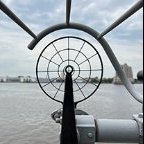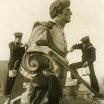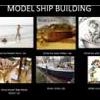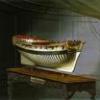
Charter33
-
Posts
451 -
Joined
-
Last visited
Reputation Activity
-
 Charter33 got a reaction from John Allen in Ship paintings
Charter33 got a reaction from John Allen in Ship paintings
Superb work Jim. I love the detail and the 'atmosphere' you instill in your work. I particularly appreciate your depiction of Bucklers Hard - one of my most favorite places in the New Forest.
Thank's for sharing them.
Graham.
-
 Charter33 reacted to Chuck in Ropewalk
Charter33 reacted to Chuck in Ropewalk
Actually I do plan on developing my rope walk further and possibly marketing it. I just this week had a conversation with an engineer to figure out how to improve it for production purposes.
I am shooting to make it available by the end of the year and create some video practice lessons.
Chuck
-
 Charter33 got a reaction from mtaylor in Ropewalk
Charter33 got a reaction from mtaylor in Ropewalk
Thank's for starting this thread, Derek, and for re-posting the link to your own design, Steve. I was contemplating having a go at making a rope walk and this has given me the final nudge to get started. I recently put together my own serving machine based on modified Lego gears as little diversion from copper cladding the hull of my Victory build. There's a real sense of achievement when it all comes together and works ......
Cheers,
Graham.
-
 Charter33 reacted to dj.bobo in RNLB Ruby & Arthur Reed 2 by dj.bobo - FINISHED
Charter33 reacted to dj.bobo in RNLB Ruby & Arthur Reed 2 by dj.bobo - FINISHED
Good evening for everyone, the work goes on with the assembly of the last parts, and because the deck lamps did not like the ones I came out with, I will rebuild them.
All the best .
Adrian,
-
 Charter33 got a reaction from coxswain in Ship paintings
Charter33 got a reaction from coxswain in Ship paintings
Superb work Jim. I love the detail and the 'atmosphere' you instill in your work. I particularly appreciate your depiction of Bucklers Hard - one of my most favorite places in the New Forest.
Thank's for sharing them.
Graham.
-
 Charter33 got a reaction from mtaylor in Ship paintings
Charter33 got a reaction from mtaylor in Ship paintings
Superb work Jim. I love the detail and the 'atmosphere' you instill in your work. I particularly appreciate your depiction of Bucklers Hard - one of my most favorite places in the New Forest.
Thank's for sharing them.
Graham.
-
 Charter33 got a reaction from Canute in Terrified
Charter33 got a reaction from Canute in Terrified
Hi and a big welcome!
I was not familiar with your choice for a first build so I've just looked it up on Google. I'm sure you will find that it will be a rewarding and satisfying project, especially with your previous modelling experience. I was in a similar position to you and convinced myself that I'd taken on a project far beyond my abilities. I then learned two essential lessons: firstly you never know what you can achieve unless you have a go, and secondly that this site is in a class of it's own when it comes to the support and guidance available. Best advice is to start your own build log - and if a challenge arises just ask. There are so many talented builders here keen to help others succeed.
Good luck!
Graham.
-
 Charter33 got a reaction from John Allen in Terrified
Charter33 got a reaction from John Allen in Terrified
Hi and a big welcome!
I was not familiar with your choice for a first build so I've just looked it up on Google. I'm sure you will find that it will be a rewarding and satisfying project, especially with your previous modelling experience. I was in a similar position to you and convinced myself that I'd taken on a project far beyond my abilities. I then learned two essential lessons: firstly you never know what you can achieve unless you have a go, and secondly that this site is in a class of it's own when it comes to the support and guidance available. Best advice is to start your own build log - and if a challenge arises just ask. There are so many talented builders here keen to help others succeed.
Good luck!
Graham.
-
 Charter33 got a reaction from CraigVT in HMS Triton by Charter33 - Complete model - POF - 1:48 Scale
Charter33 got a reaction from CraigVT in HMS Triton by Charter33 - Complete model - POF - 1:48 Scale
Hi,
The workshop is a school workshop. On a typical day I can share it with approximately a hundred students, in groups of about twenty, ranging in age from 11 - 18. This particular corner I claim as my own, the bench is mine and will be leaving the school with me when I eventually retire, as will my Poolewood wood turning lathe which also graces the room. I will, however, need to sort out a workshop of my own, when that day comes, that will be big enough to accommodate this equipment and all the other bits and pieces that have accumulated over the years!
My other project, HMS Victory, is being constructed in the 'spare' bedroom at home, much smaller and 'cosy', to put it politely.
I get to work very early to avoid travel congestion - the workshop is quiet, there are no students around, for almost an hour my time is my own ........... is there a better way to start a working day?
.... and at the other end of the day, when they've gone home, planning and marking is up to date and any meetings are finished ...........
Thanks for the comments and 'likes', the feedback is much appreciated.
Cheers,
Graham
-
 Charter33 reacted to dj.bobo in RNLB Ruby & Arthur Reed 2 by dj.bobo - FINISHED
Charter33 reacted to dj.bobo in RNLB Ruby & Arthur Reed 2 by dj.bobo - FINISHED
Good evening to everyone, I come back after some time working on my model. I build the latest parts, some fixes and I hope to close this model soon.
A beautiful evening I still want you.
Adrian.
-
 Charter33 got a reaction from BETAQDAVE in Ship paintings
Charter33 got a reaction from BETAQDAVE in Ship paintings
Superb work Jim. I love the detail and the 'atmosphere' you instill in your work. I particularly appreciate your depiction of Bucklers Hard - one of my most favorite places in the New Forest.
Thank's for sharing them.
Graham.
-
 Charter33 reacted to Vegaskip in Ship paintings
Charter33 reacted to Vegaskip in Ship paintings
Thank you all for your comments.
Last year I was fortunate to be invited, along with my wife, to take part in 'Dervish75’ the celebrations commemorating the arrival of the first Convoy to Russia. We were part of a group of WW2 convoy veterans and their carers ( the Vets were all in their 90s) flown up to Arkhangelsk where we took part in various events in memory of those who were lost during the what Winston Churchill called 'The Worst Journey On Earth.' We then moved on to St Petersburg and Kronstadt for more of the same. We shared all of these events and receptions at various consulates and embassies with our Russian hosts. We made many friends and shared lots of memories as sailors do, helped along of course with copious supplies of Vodka. A year before the trip I had been asked if I had any paintings of convoys that could be used as a small exhibition during the event. However this snowballed into 50 of my paintings being made up into a book ( printed in Moscow) 250 copies were printed and were given free to the veterans, VIPs, museums, schools and anyone who provided assistance to the venture. Each year reciprocal visits take place between Vets from Russia and UK and other allies. Efforts are being made to continue these international visits after the original veterans are gone.
Our governments may have 'frosty' relationships, but at the grass roots I know our Russian friends had exactly the same hopes and fears we have. We both want to get on with living life in peace and happiness.
jim
Here are some pages from the book
-
 Charter33 got a reaction from mtaylor in Terrified
Charter33 got a reaction from mtaylor in Terrified
Hi and a big welcome!
I was not familiar with your choice for a first build so I've just looked it up on Google. I'm sure you will find that it will be a rewarding and satisfying project, especially with your previous modelling experience. I was in a similar position to you and convinced myself that I'd taken on a project far beyond my abilities. I then learned two essential lessons: firstly you never know what you can achieve unless you have a go, and secondly that this site is in a class of it's own when it comes to the support and guidance available. Best advice is to start your own build log - and if a challenge arises just ask. There are so many talented builders here keen to help others succeed.
Good luck!
Graham.
-
 Charter33 got a reaction from Canute in Ship paintings
Charter33 got a reaction from Canute in Ship paintings
Superb work Jim. I love the detail and the 'atmosphere' you instill in your work. I particularly appreciate your depiction of Bucklers Hard - one of my most favorite places in the New Forest.
Thank's for sharing them.
Graham.
-
 Charter33 got a reaction from Jorge Diaz O in HMS Triton by Charter33 - Complete model - POF - 1:48 Scale
Charter33 got a reaction from Jorge Diaz O in HMS Triton by Charter33 - Complete model - POF - 1:48 Scale
Hi,
The workshop is a school workshop. On a typical day I can share it with approximately a hundred students, in groups of about twenty, ranging in age from 11 - 18. This particular corner I claim as my own, the bench is mine and will be leaving the school with me when I eventually retire, as will my Poolewood wood turning lathe which also graces the room. I will, however, need to sort out a workshop of my own, when that day comes, that will be big enough to accommodate this equipment and all the other bits and pieces that have accumulated over the years!
My other project, HMS Victory, is being constructed in the 'spare' bedroom at home, much smaller and 'cosy', to put it politely.
I get to work very early to avoid travel congestion - the workshop is quiet, there are no students around, for almost an hour my time is my own ........... is there a better way to start a working day?
.... and at the other end of the day, when they've gone home, planning and marking is up to date and any meetings are finished ...........
Thanks for the comments and 'likes', the feedback is much appreciated.
Cheers,
Graham
-
 Charter33 got a reaction from Jack12477 in Ship paintings
Charter33 got a reaction from Jack12477 in Ship paintings
Superb work Jim. I love the detail and the 'atmosphere' you instill in your work. I particularly appreciate your depiction of Bucklers Hard - one of my most favorite places in the New Forest.
Thank's for sharing them.
Graham.
-
 Charter33 reacted to Vegaskip in Ship paintings
Charter33 reacted to Vegaskip in Ship paintings
I have always been interested in Ships and maritime history, and did spells in the British Merchant Navy and Royal Navy. I have built models most of my life ( not the really serious ones like on here ) but I always had great pleasure building them. As well as model making, I have always had an interest in art, well, marine art really, and do a lot of painting, especially now I've retired. I don't consider my self an Artist, more a ship painter. I do it for my own pleasure, and get as much pleasure researching the subject as I do painting them.
Her are a few of my paintings, please feel free to comment. Jim
1 Convoy Rescue ship passing. Liberty ship 2. Envoy class rescue Tug 3. Death of. windjammer Flamburgh Head with Rocket Rescue Team
-
 Charter33 reacted to Vegaskip in Ship paintings
Charter33 reacted to Vegaskip in Ship paintings
Thanks Jason, I've had lots of practice. I try to keep away from the Ship Portrait type of painting, if possible I like to tell a story. Here are some more
1. HMS Hood ( no not that one ) coaling at Portsmouth, and early Submarine and Gun Boat.
2. Master Shipwright. Ship building at Bucklers Hard.
3. Stepping the Fore Mast with a Sheer Hulk.
-
 Charter33 reacted to wefalck in Serving thread
Charter33 reacted to wefalck in Serving thread
It is all a question of building scale. However, the finest yarn you can put your hands is probably the best for serving in the popular building scales - in reality, it might still be oversized.
I am using fly-tying thread myself. However, I would shy away from monofilament, even though it is the thinnest material you can get, because it has more 'wirey' properties and might come loose, when handling the served rope. When serving, the yarn has to be really tight around the rope. It also important to stretch the rope before, as rope, of course, becomes thinner, when stretched and, hence, the serving will come loose. It might be a good idea to treat served rope with lacquer or paint as soon as possible to keep everything together.
A rope-walk and a serving machine would be useful, if not even necessary. With a rope-walk you can split commercial yarn (including the fly-tying one) and recombine it to a suitable one, if needed. A serving machine allows you to serve the rope tight, while it is stretched out between two hooks.
-
 Charter33 got a reaction from capnharv2 in HMS Triton by Charter33 - Complete model - POF - 1:48 Scale
Charter33 got a reaction from capnharv2 in HMS Triton by Charter33 - Complete model - POF - 1:48 Scale
Hi,
The workshop is a school workshop. On a typical day I can share it with approximately a hundred students, in groups of about twenty, ranging in age from 11 - 18. This particular corner I claim as my own, the bench is mine and will be leaving the school with me when I eventually retire, as will my Poolewood wood turning lathe which also graces the room. I will, however, need to sort out a workshop of my own, when that day comes, that will be big enough to accommodate this equipment and all the other bits and pieces that have accumulated over the years!
My other project, HMS Victory, is being constructed in the 'spare' bedroom at home, much smaller and 'cosy', to put it politely.
I get to work very early to avoid travel congestion - the workshop is quiet, there are no students around, for almost an hour my time is my own ........... is there a better way to start a working day?
.... and at the other end of the day, when they've gone home, planning and marking is up to date and any meetings are finished ...........
Thanks for the comments and 'likes', the feedback is much appreciated.
Cheers,
Graham
-
 Charter33 reacted to Paul0367 in HMS Victory by Paul0367 - Constructo - Scale 1:94 - First wooden ship build
Charter33 reacted to Paul0367 in HMS Victory by Paul0367 - Constructo - Scale 1:94 - First wooden ship build
Winter arriving in the UK and building re-starts. I have started adding many additional details from the books that I have at my disposal before the ratlines are fitted and a lot of access is lost. Despite the kit being basic in its approach to many areas, there is a lot that can be added depending on where we as builders are prepaired to take it.
Main Jeers and main slings added on the main mast.
-
 Charter33 got a reaction from Jorge Diaz O in HMS Triton by Charter33 - Complete model - POF - 1:48 Scale
Charter33 got a reaction from Jorge Diaz O in HMS Triton by Charter33 - Complete model - POF - 1:48 Scale
A quick up-date........
After a bit or re-organisation the workshop now has an area dedicated to the Triton build.
The first frame has now been completed. I'm thinking about adding some pegs (tree nails?) Assuming that these would have been about an inch in diameter on the original my calculations come out at a gnats whisker over 0.5 mm diameter. I'll try and source some brass wire and see how it goes.
I played safe and worked on a frame from the centre of the hull (0). It currently has excess material at the top which will be trimmed later, but in the meantime this provides support for the acrylic brace that I hope will prevent any movement in the wood.
I've also had a go at making a height gauge for transferring vertical measurements from the plan to the model.
Cheers for now,
Graham.
-
 Charter33 got a reaction from AnobiumPunctatum in HMS Triton by Charter33 - Complete model - POF - 1:48 Scale
Charter33 got a reaction from AnobiumPunctatum in HMS Triton by Charter33 - Complete model - POF - 1:48 Scale
A quick up-date........
After a bit or re-organisation the workshop now has an area dedicated to the Triton build.
The first frame has now been completed. I'm thinking about adding some pegs (tree nails?) Assuming that these would have been about an inch in diameter on the original my calculations come out at a gnats whisker over 0.5 mm diameter. I'll try and source some brass wire and see how it goes.
I played safe and worked on a frame from the centre of the hull (0). It currently has excess material at the top which will be trimmed later, but in the meantime this provides support for the acrylic brace that I hope will prevent any movement in the wood.
I've also had a go at making a height gauge for transferring vertical measurements from the plan to the model.
Cheers for now,
Graham.
-
 Charter33 got a reaction from oneslim in HMS Triton by Charter33 - Complete model - POF - 1:48 Scale
Charter33 got a reaction from oneslim in HMS Triton by Charter33 - Complete model - POF - 1:48 Scale
A quick up-date........
After a bit or re-organisation the workshop now has an area dedicated to the Triton build.
The first frame has now been completed. I'm thinking about adding some pegs (tree nails?) Assuming that these would have been about an inch in diameter on the original my calculations come out at a gnats whisker over 0.5 mm diameter. I'll try and source some brass wire and see how it goes.
I played safe and worked on a frame from the centre of the hull (0). It currently has excess material at the top which will be trimmed later, but in the meantime this provides support for the acrylic brace that I hope will prevent any movement in the wood.
I've also had a go at making a height gauge for transferring vertical measurements from the plan to the model.
Cheers for now,
Graham.
-
 Charter33 got a reaction from Jorge Diaz O in HMS Triton by Charter33 - Complete model - POF - 1:48 Scale
Charter33 got a reaction from Jorge Diaz O in HMS Triton by Charter33 - Complete model - POF - 1:48 Scale
Hi,
Now that the dust has settled on the start of a new school year I've managed devote a bit of time again to this project and have made some more progress ......
Shaping the fore and aft deadwoods was holding me up a bit as I tried to make sense of the various sectional profile drawings. My inexperience was evident as I tried to juggle the various profiles and much time was spent working through the other build logs in this section. They certainly helped, and then I came across and followed the link that Dan Vad mentioned in a post referring to his HMS Vulture build. This proved to be a great help and I can see myself visiting this regularly as my build continues - thank's Dan!
In the end you just have to dive in and have a go...
Using a combination of thin brass sheet and acrylic templates pinned to the aft deadwood the sides were reduced to the required shape.
My first attempt at tapering the lower end of the inner post was not as successful as I had hoped so a second had to be made.
The rebates were then cut in the stern post with a scalpel and lower area worked to match the ajoining components prior to being glued together.
A carving knife proved an effective way to cut the curving rebate in the stem and subsequent shaping of the fore deadwood. I expect there will be a bit more work ahead on these later.
At last we have a keel!
... and work begins on the frames ......
Cheers,
Graham.











